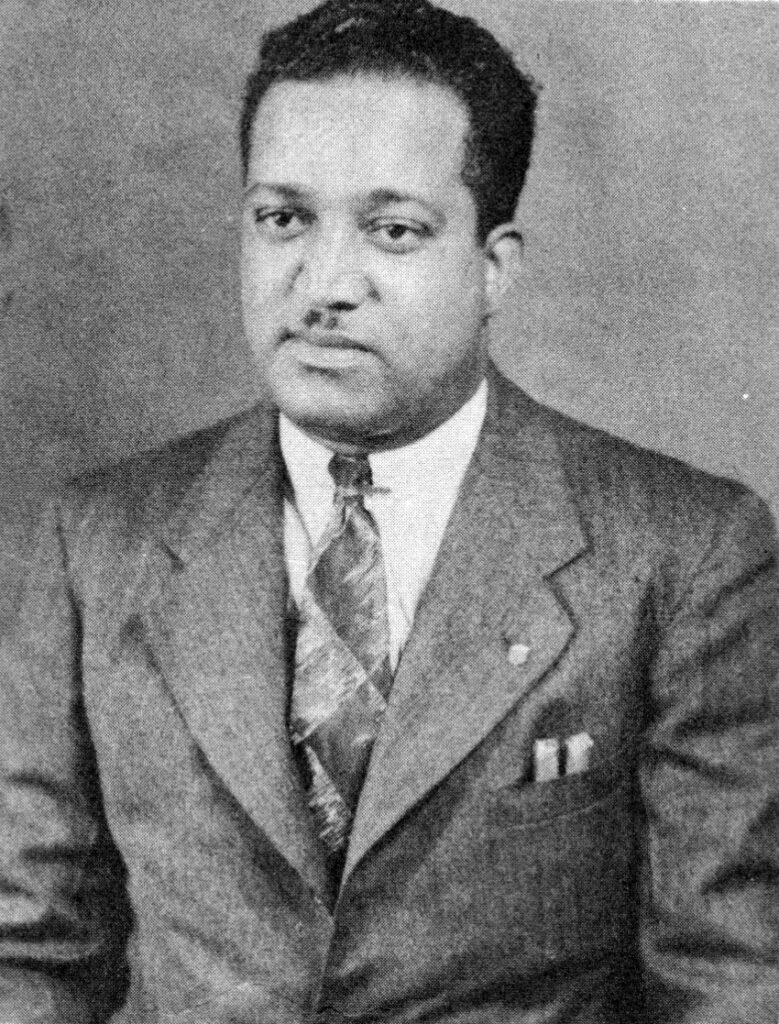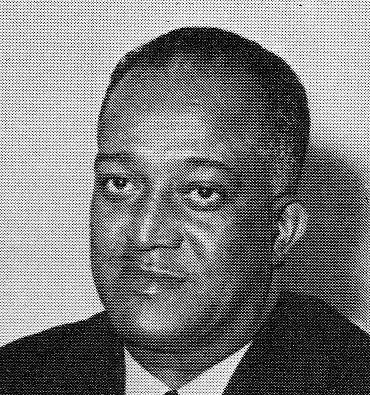Lawrence Emerson - J. S. Clark Principal , 1953 - 1969

Biography
LAWRENCE H. EMERSON
August 3, 1910 —September 14, 1979

Lawrence Henry Emerson served as principal of J.S. Clark High School in Opelousas, Louisiana, from its beginning in 1953 until it closed in 1969. A passion for educating youth, a strong work ethic, and the compelling vision to provide an excellent education for all students formed the bedrock of his 39 year tenure as an educator in St. Landry Parish.
He was the sixth of eleven children born to Henry Lawrence Emerson and Eva Zacherie Emerson. His father was a butcher and his mother a seamstress.
Upon completing an elementary and secondary education at Holy Ghost School, Emerson entered Xavier University of Louisiana, where he earned a Bachelor of Arts degree in 1935, and later a Master of Arts degree in Administration. He returned to Holy Ghost High as a social studies teacher and boys’ basketball coach after receiving his first degree. Three years later, he joined the faculty at St. Landry Parish Training School, a name that preceded the J.S. Clark designation.
In 1944, at the demise of Professor J. H. Augustus, who had played a significant role in the development of the school, Emerson accepted the position of principal at St. Landry Parish Training School, which was both an elementary and secondary school. In the era of the South ‘s racially segregated education system, African American students and faculty were allowed limited access to academic and athletic resources. Emerson met this as a challenge and, in the tradition of the school’s founders—Rebecca Barnett Deshotels, John H. Deshotels, Sr., and Norwood W. Davis, Sr.—he set out to pursue as sound and effective an educational foundation for students as possible.
He recruited a faculty of dedicated and credentialed academic teachers and athletic coaches to help carry out the goal. With the addition of Mr. Leo Little to the staff, a local music instructor, the school ‘s first marching band was formed. Teachers coached students in singing, dramatic arts, and oratory to excel in Louisiana Interscholastic Athletic and Literary Association competitions. Football and frack teams were formed in 1949 to expand the school’s athletic program to three sports. Students were encouraged to participate in 4H clubs, and Boy Scouts and Girl Scouts of America.
In 1953, Emerson led the school onto a new four-acre campus. The institution’s name was then changed to J.S. Clark High School, in honor of Joseph S. Clark, the founder of Southern University. With this move, the school remained both an elementary and secondary institution, but gained in both physical size and academic dimension. The high school curriculum was broadened to include business education classes, more science classes, and the study of French, with a language laboratory. New sports facilities, which included football and track fields and a well-equipped gymnasium, were constructed.
Emerson paid fitting tribute to students for the endurance to press on in the face of hardships; for the pride, diligence, and willingness to discover and develop their potential and talents. He recognized parents for their faith and tireless support. During J.S. Clark’s 16 year existence. over 2,000 students were graduated. Some continued their education in trade schools. Some enrolled and graduated from universities in Louisiana and throughout the United States. Clark graduates pursued numerous and various fields and areas of employment and gained success in many.
Former students Rodney Milburn and James Joseph gained international prominence in their respective fields. Milburn, class of 1969, earned a gold medal in hurdles in the 1984 Olympics in Munich, Germany. James Joseph, a 1952 graduate of the original school, served as the Under
Secretary of the Department of the Interior during President Jimmy Carter’s term. Under President Bill Clinton, Joseph was appointed as United States Ambassador to South Africa. He was the only U.S. Ambassador to serve during the term of President Nelson Mandela.
Historically, J. S. Clark was closed in 1969 when the two Opelousas public high schools were racially integrated. The J. S. Clark facility was converted into East Junior High, where Emerson served as principal until his retirement in 1975.
Lawrence H. Emerson was active in many civic, religious, health, and educational organizations in the community. During the 1953 Mississippi River Flood, he commanded a Red Cross Tent City on the campus of St. Landry Parish Training School, and in the summer of 1957, he directed a shelter at J. S. Clark High School for Hurricane Audrey evacuees. As a board member of Holy Ghost Catholic Church, he was instrumental in establishing the Holy Trinity Villa for senior citizens. He was a member of the Opelousas Chamber of Commerce and a lifetime member of Kappa Alpha Psi fraternity. During his term as principal, he served as a fund-raiser for the March of Dimes, the American Heart Association, and the United Negro College Fund.
He was married to Lucy M. Duplechain, who taught English and who, in the early years of the school, served as a librarian, accountant, or wherever she was needed to keep the school operating in full force. They were the parents of a daughter, Catherine.
The Lawrence and Lucy Emerson Scholarship was endowed in his and his wife’s memory and is awarded annually at Xavier University of Louisiana
